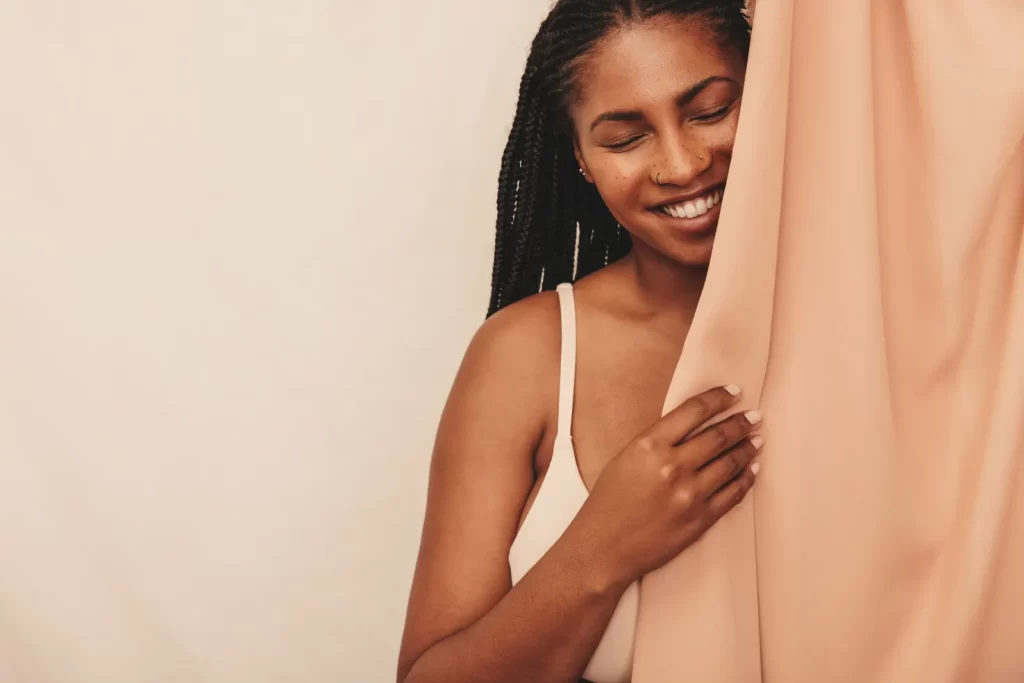Lisa Creffield
Jessica Whitton was 19 when she decided that she’d finally had enough of her huge breasts. She became one of thousands of women in Australia booking in for a “reverse boob job”, where breasts are reduced rather than enlarged. For Whitton, it was an easy decision.
The animal welfare worker first became aware of the procedure in her mid-teens through social media, and did a lot of research before having her E cup reduced to a C cup. Now 21, she says the surgery changed her life.
“I immediately felt lighter – both physically and mentally – and I felt so much more confident,” says Whitton, who struggled with neck, back and shoulder pain.
Surgeon Garry Buckland says the demographic of people seeking breast reduction in his practice has “changed dramatically” over the past 20 years.

Millennials want to undergo cosmetic surgery more than any other generation.
“Initially, I largely treated women in their 60s for breast reduction surgery. Today, the most common demographic is women aged between 18 and 30, with women in their 20s outnumbering other age groups,” says Buckland. “This correlates with a generation who are unwilling to tolerate the physical and psychological implications of disproportionately large breasts.”
For many young women, the journey to a reduction starts online. Communities such as Reddit’s r/reduction forum offer advice and support with members posting before-and-after photos, and sharing advice on everything from insurance cover to post-surgery recovery. Other users share their excitement at buying their first bra post-surgery or post photos of “goodbye boobs” celebratory cupcakes.
Breast reduction terms to know
- Macromastia: having abnormally large breasts
- Mammoplasty: any surgery involving changing the appearance of the breast
- Mastopexy: surgery to lift the breasts
- Ptosis: sagging of breasts
- Anchor: incision around the areola, vertically and horizontally below the breast
- Lollipop: incision around the areola and vertically
- FNG: “free nipple graft” used for more severe cases, where the nipple is removed and reattached
- Drop and fluff: the natural setting of breasts into a teardrop shape
One explanation for the surge in breast reductions is that women’s breasts are growing larger, particularly in western countries. Bra manufacturers frequently share data that shows average size increasing from B cups to D cups and higher in the last 30 years.
Rastogi notes a correlation between body mass and breast size as the average height and weight of Australian women increases. But exposure to endocrine disruptors in cosmetics, cleaning products and ultra-processed foods may be another cause.
RELATED ARTICLE

Fitness
Whether you’re a football star or new runner, your boobs need support
Sach Trikha, who works in financial services, went under the knife in her twenties. Going from a 10F to a 10C cup size was much more comfortable on her 157 cm frame and meant she could easily find a bra that fit while shopping.
“I distinctly remember noticing I no longer had the heaviness sitting on my ribs that I had felt since I was 12,” says the 30-year-old.
Plastic surgeon Dr Alaina Taylor says the popularity of breast reductions in younger women has been influenced by women deciding not to have children or choosing to have them later in life. Previously, many women delayed the surgery until after having kids.
Having big boobs causes a range of issues for women. There’s the struggle to find comfortable bras and clothes that fit. Exercising can be difficult, there may be shoulder pain, as well as skin conditions.
However, Taylor cautions that all surgery comes with risks and individual results will vary. “Women should always consult a specialist surgeon before proceeding and ask about the associated risk and recovery of invasive procedures.”
Why so many people, including the Kardashians, have plastic surgery regret
For younger women, sexual objectification can also be a particularly difficult issue. Teenage girls can face unwelcome attention and may be mocked or harassed at school, though Taylor notes that these reasons are consistent across the generations.
“Most women ask for their breasts to be as small as possible,” she says.
Compared to other kinds of cosmetic surgery, breast reduction has one of the lowest rates of regret. “My patients are usually very happy and return with beaming smiles to say the procedure has changed their lives,” Taylor says.
Whitton and Trikha certainly have no regrets. “I truly feel I’m in the prime of my life now,” Trikha says.